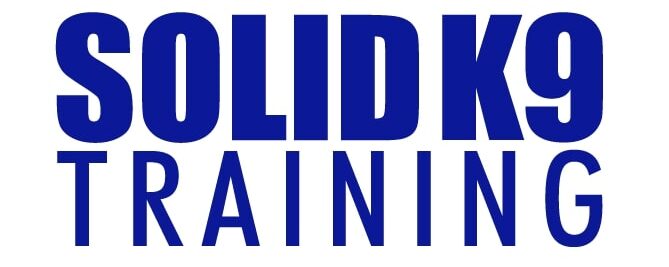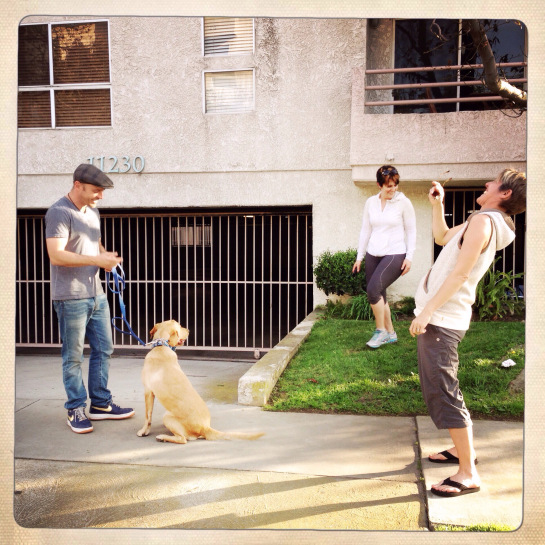The Dog Reactivity Handbook!
As a dog trainer who travels the country training dogs and working with 20-30 families a week in their homes it is so important for folks to understand how a dog thinks. And when there is no authority figure present, the kind of chaos and bad behavior that can happen. Remember the bad behavior of your dog is not the problem it is just the outcome of a breakdown of leadership in your home.
My friend, co-host of the Train The Trainers Seminar Series, and LA dog training colleague Sean O’Shea from The Good Dog Training and Rehabilitation puts out such a great blog that I feature it here on my blog. Since the message is so powerful and important it needs to be shared by all. Enjoy the read and feel free to also join his Facebook Fan Page.
The Dog Reactivity Handbook!
By Sean O’Shea
Oftentimes I see dog owners allowing tons of monkey business to ensue on walks – their dogs are pulling continuously on leash, darting here and there, marking this and that at their discretion, and all in all being disconnected, disrespectful, and stressed out – but then when their dog sees another dog and starts to freak out, the owner tries to address/correct their dog by vainly tugging on the leash, talking or yelling at them, and getting frustrated.
This is the “address the dynamite rather than the fuse syndrome” and, as you can imagine, trying to stop the explosion is way harder than trying to put out the fuse. 🙂 This isn’t how you want to go about getting rid of reactivity issues on the walk!
The trick to fixing this stuff is actually simple: it’s all about setting the proper tone and state of mind before you encounter the target or trigger, not once you’re in the heat of battle.
Dogs who are allowed to pull you through thresholds, pull on leash, veer to trees and grass to pee and sniff when they choose and, in general, disregard their owner, are being taught that they are in charge. This creates stressed-out, fearful/anxious and/or entitled/empowered nervous wrecks who feel unsafe and overburdened with the responsibility to figure their world out.
Not a fun place to be for your dog.
And this is where dog reactivity on-leash comes from: Frustration or fear (and sometimes a combo of both!) from a lack of believable guidance.
Dogs with believable leaders, enforced rules, and structure are confident, relaxed, and comfortable dogs. And dogs who are confident, relaxed, and comfortable aren’t stressed and reactive! 🙂
So let’s have a look at a few very simple steps to change the dynamic of stressed and reactive into one of calm and cool.
Here’s your no monkey-business/reactivity/stress/anxiety prescription:
1) Dog waits patiently at thresholds (with zero pulling) for permission to move through. (Watch my “Thresholds” video HERE.)
2) Keep the leash short but not tight, always leaving a small amount of play. The short leash helps you keep your dog out of trouble AND allows you to know the instant he becomes disconnected. (Watch my “Walk” video HERE.)
3) Oftentimes a firmer conversation/correction for bad behavior/poor choices at the top of the walk will set the tone for a much more respectful and deferential walk. Setting the tone with a firmer consequence for a smaller infraction can be counter-intuitive but highly effective.
4) Never use constant pressure to hold your dog back from pulling. Instead you use corrective leash pops with instant release to give your dog information and allow him to be responsible to hold himself in position. Let your dog tell you the right level of leash pop needed. If you pop at a level two and the behavior persists, you’re likely using too mild of a correction, so try a level four. Again, let your dog tell you what works.
5) If leash pops aren’t breaking through and your dog is continuing to be intense and pulling, brisk 180′s when your dog gets out in front of you (walking the opposite direction while holding the leash firmly to your chest with two hands) can be a very helpful conversation. Always only use as much pressure as needed. Helpful video HERE!
6) Never allow pulling to trees/grass/flowers etc for marking. Instead you release your dog to pee and sniff when you decide. It makes no sense to your dog if you allow him to pull and disregard you 90% of the time, and then expect him to listen during the 10% when it matters to you most.
7) Manage and cultivate a healthy/positive state of mind by using the leash pops to address/correct your dog at the split second he begins to escalate or become excited when he sees or hears a dog. Do not wait for the explosion – correct your dog when they are at a 1, 2, or 3 and you will never see a 7, 8, 9, or 10!
8) Use space as a buffer with oncoming dogs. Don’t put your dog into “the pressure cooker” with another dog. The closer your dog gets to another dog the more the pressure increases. If your dog is nervous – like most reactive dogs are – the closer you get the less safe he feels. If your dog is bratty and excited, the closer you get, the more his frustration/excitement increases. In either case the less the space the harder it is for you and your dog to be successful. (Note: Super naughty, spazzy, bratty, reactive dogs coming towards you need more space than sedate and relaxed dogs do.
9) Focus on creating polite, courteous, and relaxed behavior at all times, and this will become your dog’s default state.
Remember, the dog who pulls on leash and is allowed to practice pushy and intense behavior at other times is the same dog who is going to make your life miserable around other dogs.
Sean’s website www.thegooddog.net
Sean’s Facebook Page
Sean’s groundbreaking do-it-yourself training video/PDF training booklet Learn to Train The Good Dog Way: The Foundation is now available for pre-order at a discounted price – click HERE to watch the new TEASER video, and find out how to to order your copy on Sean’s website!
The Good Dog Training and Rehabilitation
4867 Bellflower Ave.
North Hollywood, CA 91601
(818) 441-1837
Solid K9 Training Training Center- 25 Acorn Street, Providence, RI 02903
(401) 274 1078
Solid K9 Training Brooklyn NY Location- 210 24th Street Brooklyn NY 11232
www.solidk9training.com/brooklyn-dog-training-location
Providence Training Center Info
*********FOLLOW ME**********
Subscribe To My YouTube Channel
Facebook
Twitter
Instagram
Pinterest


I have a 6 month gsd who is absolutely wild. We taught her sit, stay, shake, wait etc at 10 weeks. She knows them well, but doesnt want to listen to them in even lightly aroused areas. Her recall is poor. Weve tried every collar/harness out there. She fights them even the ecollar. Never wanted to use a prong collar for the same reasons you claim people think theyre cruel. I came across your site and your article turned my whole view of prongs around. I ran out and got one. Watched a couple of your vids ob how to fit it and how to use it. It worked fabulous the first 2 times. Walked her 3 miles each time. The next day I realized I needed to remove a link. Its rotating around the neck. Now she is pulling again. What am I doing wrong? Its snug, but still rotates. Maybe theres not enough prongs now. I have 6 prongs left on the collar. 3mm prongs. Going to order the herm spenger today.
Julie
keep in mind that it is not just the collar that does the training, the training does the training and the collar helps communicate the training. So if I was to grab the leash of your dog, your dog would walk fine, hand the leash to you and you may struggle. There is body position, energy, leash pressure, leash conversation, mental projection, cadence, position of the dog to consider..I have some videos that explain how to properly walk the dog you may want to check out…i know you will get this.you can go to my YouTube page to see them
jeff
Hi Jeff,
Been looking online at your videos and I wish I still lived in NH, I’d be at your office in a heartbeat. Nonetheless, I have a 15 month Shepard mix and he is leash reactive and suffers from separation anxiety whenever I’m out of his sight. He’s a rescue I adopted around thanksgiving and my walks and hikes with my k9 companion are a nightmare I just bought him a prong collar in hopes this corrects his behavior. I live in California now, any advice to get my boy Darvy to be my sweet 4legged hiking companion and not cujo every time he sees other dogs would be extremely helpful.
Thank You!
steven,
you can train the dog yourself without me, if you watch my videos, apply the tools and philosophy you will see great improvement with your dog, folks are training their dogs around the world without any of my live help other than social media. If you are in a jam, my colleagues at http://www.thegooddog.net can also help you in CA. Jeff